Abstract
Arts medicine has come of age, resulting from 3 important developments over the past decade: improved methods of diagnosis and treatment, an awareness that artists suffer from special problems related to their occupation and lifestyle, and the establishment of health programs emphasizing an interdisciplinary approach to these patients. We focus on the patterns of illness afflicting performing artists, specifically dancers, singers, actors, and instrumental musicians, and explain some of the things a health care team can do in treating these patients. The conditions governing these patients' lives--early exposure to high expectations of excellence, incessant demands for perfection, long periods of intense practicing, fierce competition, high levels of anxiety associated with performance, and uncertain careers--need to be understood. Levels of disease and disability are remarkably high, but artists often ignore symptoms. We discuss the musculoskeletal, neurologic, vocal, psychological, and other syndromes found among performers and some of the difficulties in treating them. The prevention of injury, conservative management, collaboration with teachers, and a psychotherapeutic approach are desirable. Arts medicine programs for professional consultation exist in several major cities of the United States and abroad. Although research is needed regarding the effectiveness of health care services for performing artists, the scientific literature devoted to this field is growing.
Full text
PDF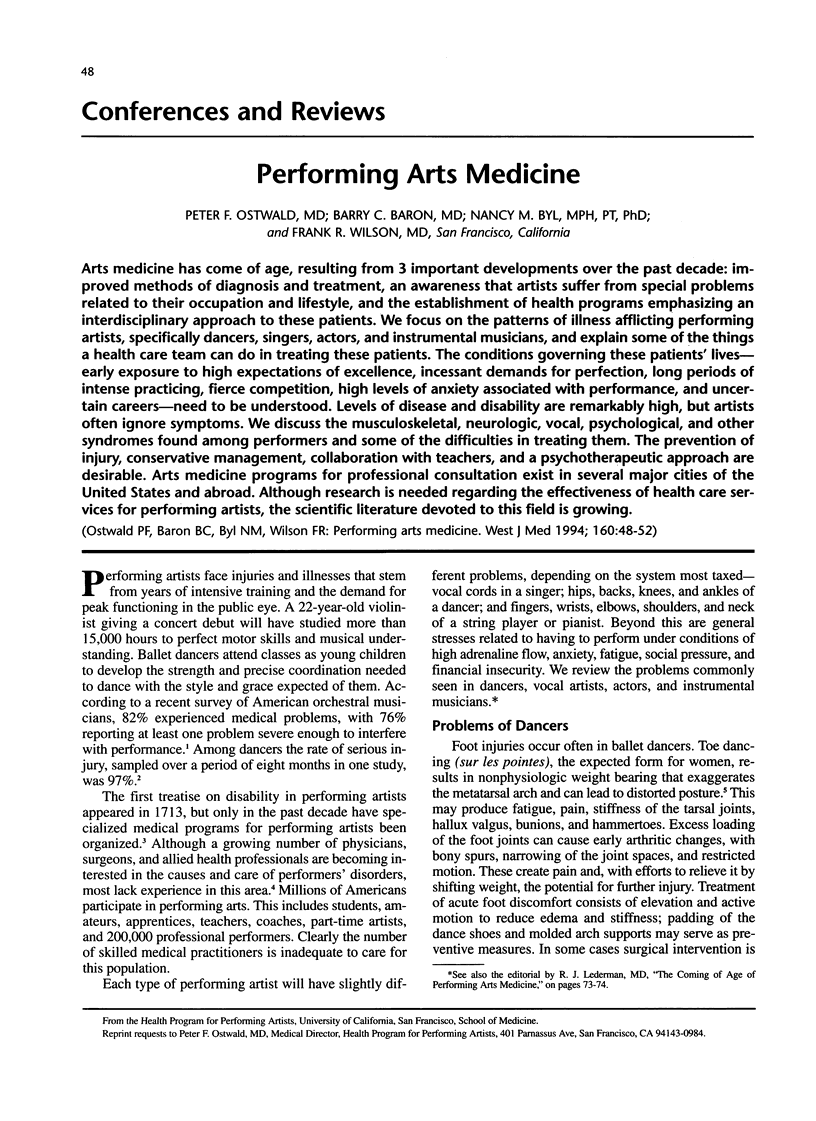
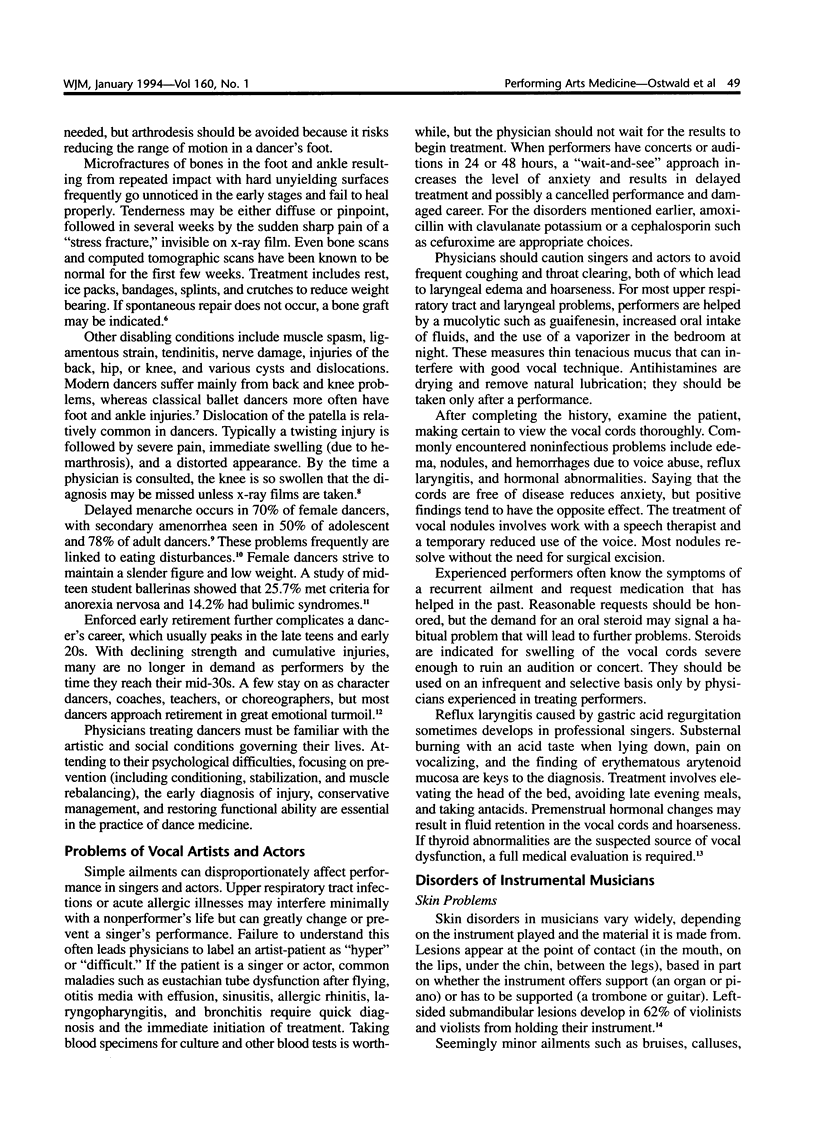
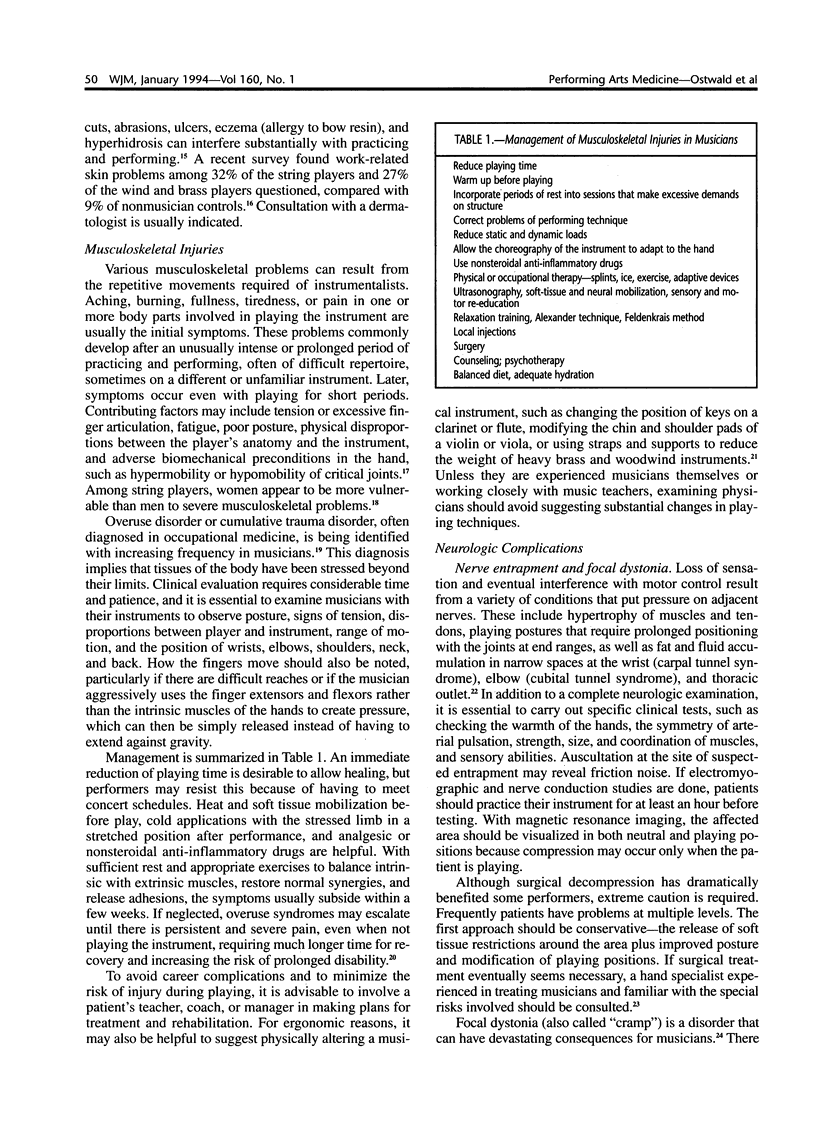
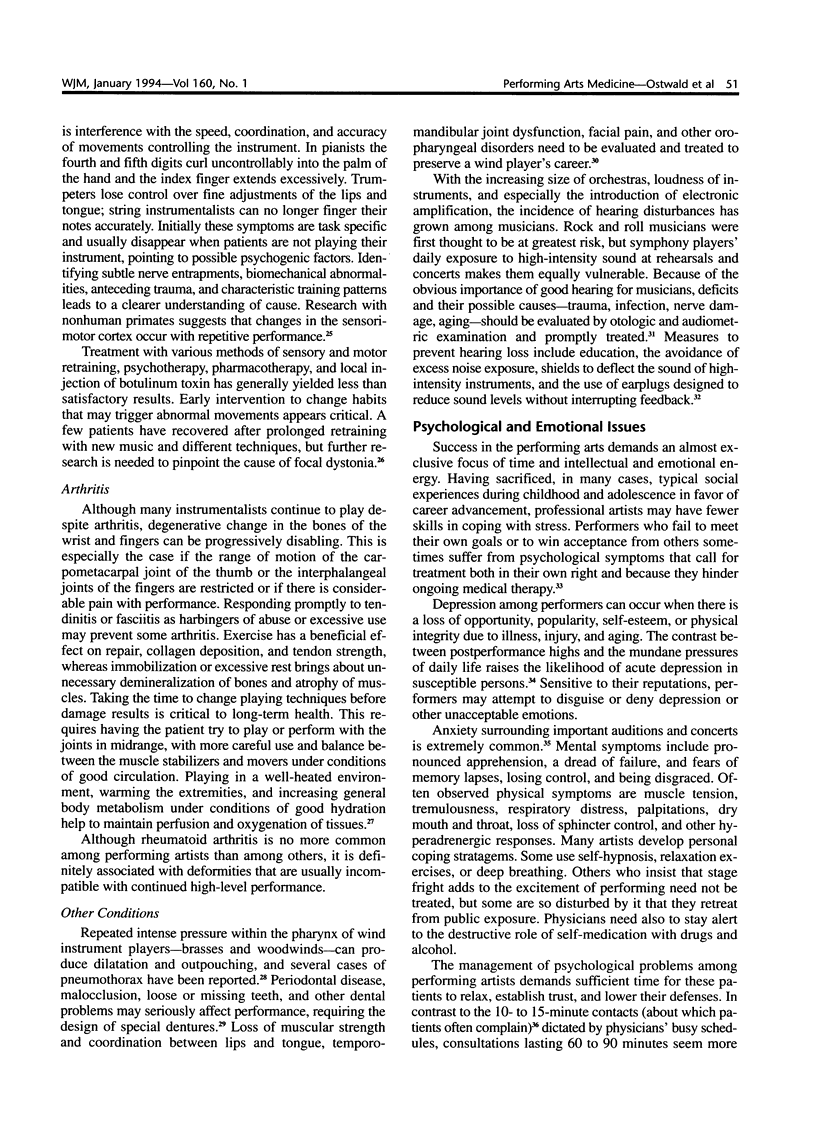
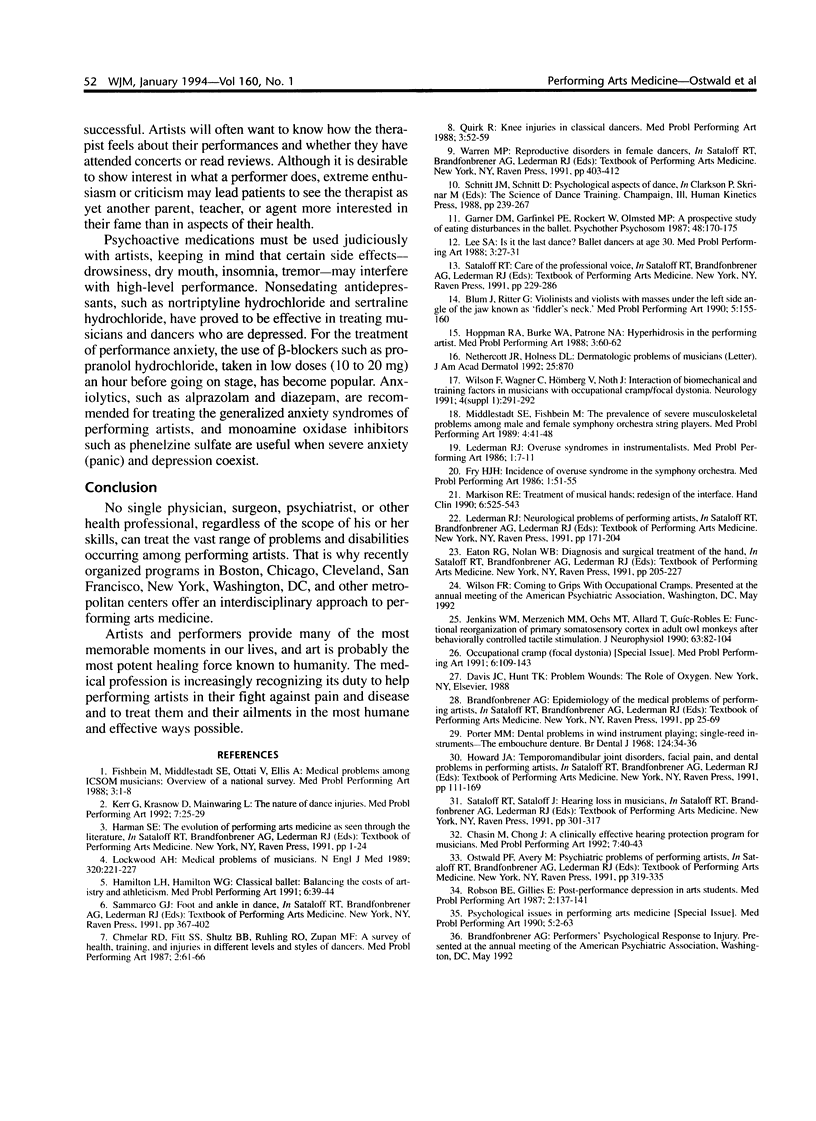
Selected References
These references are in PubMed. This may not be the complete list of references from this article.
- Garner D. M., Garfinkel P. E., Rockert W., Olmsted M. P. A prospective study of eating disturbances in the ballet. Psychother Psychosom. 1987;48(1-4):170–175. doi: 10.1159/000288049. [DOI] [PubMed] [Google Scholar]
- Jenkins W. M., Merzenich M. M., Ochs M. T., Allard T., Guíc-Robles E. Functional reorganization of primary somatosensory cortex in adult owl monkeys after behaviorally controlled tactile stimulation. J Neurophysiol. 1990 Jan;63(1):82–104. doi: 10.1152/jn.1990.63.1.82. [DOI] [PubMed] [Google Scholar]
- Lockwood A. H. Medical problems of musicians. N Engl J Med. 1989 Jan 26;320(4):221–227. doi: 10.1056/NEJM198901263200405. [DOI] [PubMed] [Google Scholar]
- Markison R. E. Treatment of musical hands: redesign of the interface. Hand Clin. 1990 Aug;6(3):525–544. [PubMed] [Google Scholar]
- Nethercott J. R., Holness D. L. Dermatologic problems of musicians. J Am Acad Dermatol. 1991 Nov;25(5 Pt 1):870–870. doi: 10.1016/s0190-9622(08)81004-3. [DOI] [PubMed] [Google Scholar]
- Porter M. M. Dental problems in wind instrument playing. 6--Single-reed instruments--The embouchure denture. Br Dent J. 1968 Jan 2;124(1):34–36. [PubMed] [Google Scholar]


